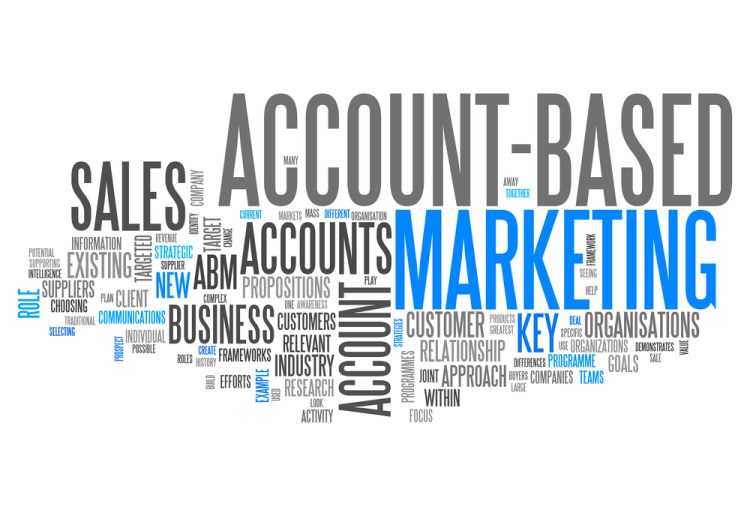This sponsored post is produced by Demandbase.
Whether you’ve been a B2B marketer for a year, a decade, or a quarter century, you know that our industry is changing at a pace that’s both thrilling and intimidating. Marketers and vendors have done an admirable job of innovating to accommodate these changes. As we become more informed on how to target, engage, convert, and measure our key audiences, we are gaining a deeper understanding about digital buying behaviors.
It truly is an amazing time for B2B marketing. There have been so many advancements in marketing technology that are solving critical issues for the B2B marketer.
In the past, we had to rely on repurposing B2C technology for our own needs, but that’s changing quickly. There’s now more technology available that is specifically built for the B2B market, including innovations in advertising, personalization, conversion and measurement.
With the advent of these innovations that enable solutions to scale, B2B marketers are changing their habits and driving a new way of attracting and engaging customers. Below are three key areas that will encompass the future of B2B marketing.
Account-based marketing (ABM)
In almost all B2B organizations, sales and marketing are not aligned. Their success measure is fundamentally different. Marketing focuses on quantity and volume of leads while sales focuses on quality and targeted accounts. In fact, most sales teams don’t even follow up on 50 percent of marketing’s leads, even though they may have a shortfall in pipeline to meet their revenue target! The VP of Sales simply doesn’t care about clicks or some three percent conversion rate that, frankly, sounds abysmal even if it is better than average.
B2B marketers need to build awareness, engagement, and opportunities for the “accounts” their sales team is targeting. This strategy is known as account-based marketing, or ABM, and while the concept has been around for decades, recent innovations have given sales and marketing teams the ability to scale their ABM efforts and deliver customized content in real-time to hundreds, even thousands of accounts. Going forward, we will see ABM continue to focus on sales and marketing resources so that both teams are now targeting the highest value accounts.
“Always-on” advertising & subscription model
Advertising in B2B simply has not worked in years past. Limited targeting and low click-through-rates combined with low form-completion-rates led to very few whitepaper downloads. Times have changed. The introduction of real-time bidding and programmatic advertising has made it possible to buy a single impression, in real-time, to target a specific company interested in relevant content. Clicks no longer matter. Instead, increasing engagement on your website, to the right content, with the right companies, on an “always on” basis, is essential for driving new clients. We have data from multiple customers showing that as soon as you stop advertising to your key accounts, they stop coming to your website. The traffic literally falls to zero.
Always-on advertising can be paralleled to Google Adwords. While campaigns flow in and out, there is always a certain budget each month for always-on keyword advertising. Extending this concept to those key accounts that your sales teams want to focus on, you can programmatically adjust which accounts get more attention depending on changes in the sales cycle. This always-on presence is required at each stage of the funnel, not just the top. The goal should be to customize the experience on your website and nurture them all the way to conversion. No more stop and start campaigns.
Best of breed vs. single vendor
With more than 2,000 marketing and ad technology companies out there, no two organizations have the exact same marketing technology portfolio. In fact, most companies average 17 different solutions. CMOs want to optimize performance at every step in the marketing chain, so they’re going to buy the best solution for personalization, marketing automation, and others rather than put their entire business in the hands of one single vendor. However, as the marketing technology landscape grows more complex, marketers need to consider how all of these solutions can work together in a cohesive manner to avoid marketing silos and accurately manage data and performance across every marketing activity. Looking forward, a “best of breed” approach is going to prevail, but marketers need to move towards a connective tissue that will tie all of their technology together.
The future of B2B marketing will be about creating a more connected and continuous customer experience, across the web from advertising to your website to your CRM system. Of course, this will require change — change in approach and measurement, because frankly, the B2B market has been underserved for years, and with innovations in technology, it’s time to change that.
 Chris Golec is the founder and chief executive officer of Demandbase, the leader in B2B marketing cloud solutions. He spoke about these topics during his keynote at the company’s Marketing Innovation Summit for B2B today.
Chris Golec is the founder and chief executive officer of Demandbase, the leader in B2B marketing cloud solutions. He spoke about these topics during his keynote at the company’s Marketing Innovation Summit for B2B today.
Sponsored posts are content that has been produced by a company that is either paying for the post or has a business relationship with VentureBeat, and they’re always clearly marked. The content of news stories produced by our editorial team is never influenced by advertisers or sponsors in any way. For more information, contact sales@venturebeat.com.
VentureBeat's mission is to be a digital town square for technical decision-makers to gain knowledge about transformative enterprise technology and transact. Learn More

